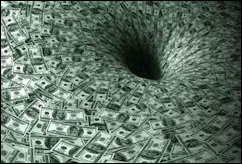Inundated by unemployment claims during the COVID-19-induced recession last year, the Virginia Employment Commission made an estimated $930 million in “incorrect” payments last year, according to an update by the Joint Legislative Audit and Review Commission.
The magnitude of wasted dollars has gone largely unnoticed as the media and the Northam administration have focused on VEC’s failure to deliver unemployment benefits to out-of-work Virginians, many of who have fallen behind on their rent payments now face eviction.
Between March 2020 and July 2021, the VEC paid out $13.9 billion in state and federal unemployment benefits, states JLARC. The number of claims jumped tenfold, and guidance for administering the gush in federal relief dollars was unclear and evolved over time. The VEC’s obsolete claims-processing software was overwhelmed. Further, the VEC compounded its problems by making forms and instructions overly “complex and confusing.”
The VEC standard for processing claims is 21 days. Before the pandemic, the agency hit that goal about 90% to 95% of the time. The percentage plummeted to less than 25% by the third quarter of 2021. Likewise, the adjudication of claims within 21 days fell to nearly zero. Indeed, 82% of adjudications took longer than 70 days, according to JLARC numbers, and the agency faces a backlog of more than 100,000.
Meanwhile, VEC has virtually ceased reviewing employer separation reports to verify claimants’ eligibility for unemployment insurance. About 579,000 claims have gone unreviewed.
“The rate and dollar amount of incorrect benefit payments — including to fraudulent actors — increased substantially during COVID-19,” JLARC states. The Department of Labor standard for incorrect payments is 10%. In Virginia, the level reached nearly 45%.
JLARC estimates that VEC issued nearly $930 million in “incorrect” payments in 2020 alone. Nearly 100% were classified as overpayments.
Fraud was rampant. VEC’s estimated that the fraud rate for state unemployment payments increased from 1.4% in 2019 to 7.5% in 2020 — by at least $70 million. Meanwhile, the VEC is still reviewing a backlog of 136,000 potentially fraudulent payments. Overpayments will be “difficult” to collect, JLARC observes.
Bacon’s bottom line: In the previous post I discussed findings of the Consumer Financial Protection Bureau that low-income renters’ credit scores actually improved overall during the COVID pandemic despite job losses, thanks largely to the showering of federal relief dollars. I found it odd that credit scores were improving even as thousands of renters were falling behind in their payments to landlords. I offered two possible explanations: administrative failures in getting federal relief dollars into the hands of renters, and widespread cheating by renters.
The JLARC report provides data consistent with both explanations. If there is a backlog of more than 100,000 cases, clearly not all out-of-work Virginia workers are getting all of their unemployment relief.
At the same time JLARC numbers suggest that cheating is widespread. Fraudulent payments amount to 7.5% of funds dispensed last year, and JLARC still had tens of thousands of potentially fraudulent cases to review. The cheating by those collecting unemployment benefits may or may not coincide with unemployed renters claiming hardship and stiffing their landlords. But I would say that the JLARC stats reinforce my conjecture that thousands of low-income Virginians have adopted the attitude of never letting a good crisis go to waste.


Leave a Reply
You must be logged in to post a comment.